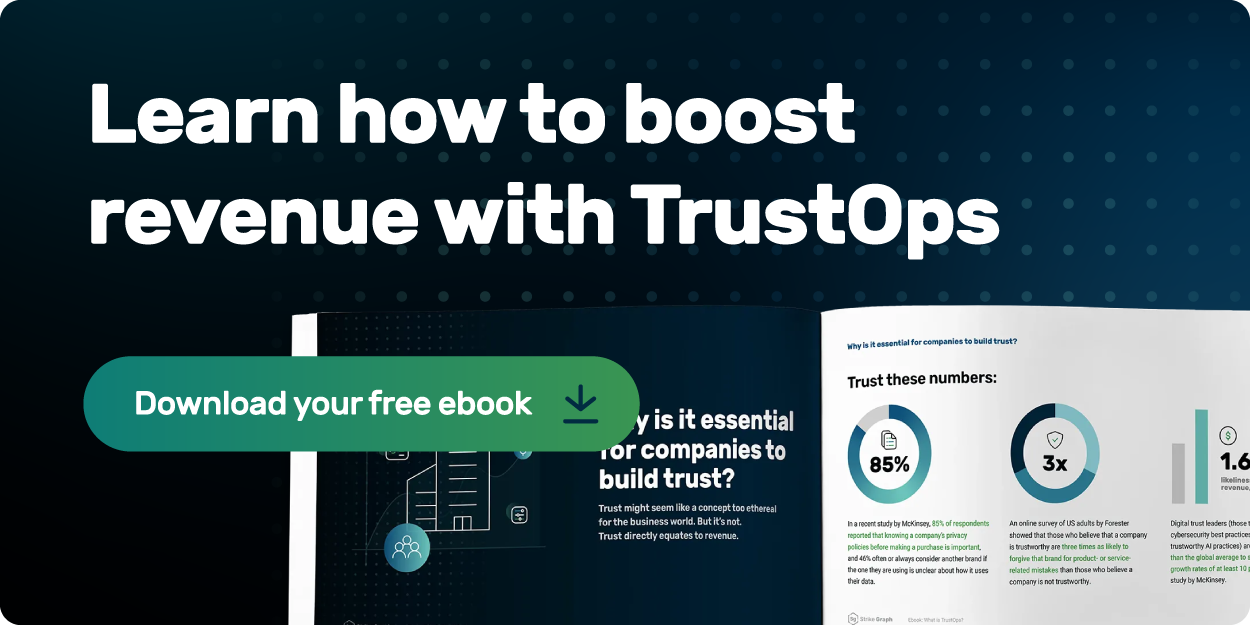When it comes to compliance management, it can be difficult to keep everyone in your organization on the same page.
That’s why we here at Strike Graph have created a new feature for our customers: teams.
Teams is a suite of features designed to support our enterprise customers with multiple compliance programs and MSP/MSSP partners. It allows an organization’s team members to more easily collaborate, work only on the projects they need to, and ultimately achieve compliance faster and more efficiently.
In this post, we’ll review some of the benefits teams can bring to your organization.
What’s great about teams
So what exactly can teams do? Before we get into the nitty gritty, let’s quickly review some teams-specific language we’ll be using in this post so that it’s easier to follow along:
- A user refers to a single person using the platform.
- An organization refers to a compliance program.
- A team refers to a group of users within an organization.
- A multi-team user refers to someone who can navigate between multiple teams within one organization.
- A multi-org user refers to someone who can navigate between multiple organizations.
Now that you know the lingo, let’s continue by exploring some teams highlights.

Separate workspaces within one organization

Teams allows for separate workspaces, or “teams,” to be established within an organization. This means you can organize your people by department, stages of compliance, or any other designation that works best for your business.
Once teams are created, users can be invited via email.
When an invitation is accepted — and it must be within 48 hours — users can then be assigned to one or more specific teams. From there, they can be given different permissions depending on what they need to accomplish within each team.

As shown below, this means a user with designated permissions can navigate between multiple teams’ workspaces.

Speaking of workspaces, a team’s workspace includes its own separate framework, risks, controls, evidence, trust asset library, integrations, audit exports, and more. This means everything needed for a robust security program is contained within each individual team.
Additionally, if you or someone from the C-Suite needs to manage multiple teams, you can be identified as a global admin user and given special permissions so you have insight into what’s going on across all teams and have access to all trust asset libraries. This is great tool for CISOs, CTOs, CCOs, and others who oversee multi-team or multi-organization TrustOps programs.
One user across many organizations
As we briefly mentioned before, multi-org users can navigate between multiple organizations. Similar to multi-team users, multi-org users can be given different permissions based on the teams they are associated with across different organizations.
Creating multi-org users can be helpful for CSMs with multiple organizations to support, external partners, or other contractors who need to work with multiple organizations.
Security remains tight because an organization always has the ability to revoke access to the multi-org user at any time without blocking that user’s access to the other organizations that they’re a part of.
Strike Graph teams is a better way to manage compliance
Strike Graph’s mission is to provide the robust, flexible tech tools companies need to design, operate, and measure security and TrustOps programs. Teams is one way we’re doing that. But it’s not the only one! We continue to innovate, leveraging AI and automation to streamline your security processes, from start to certification.
P.S. Check out our trust assets library!
.jpg?width=1448&height=726&name=Screen%20Shot%202023-02-09%20at%202.57.5-min%20(1).jpg)












